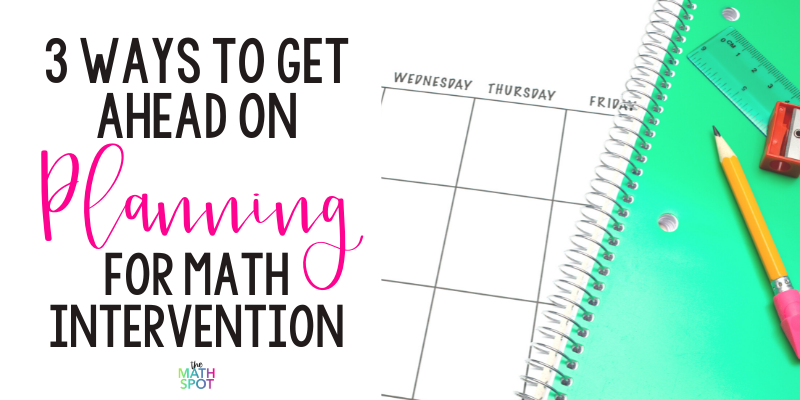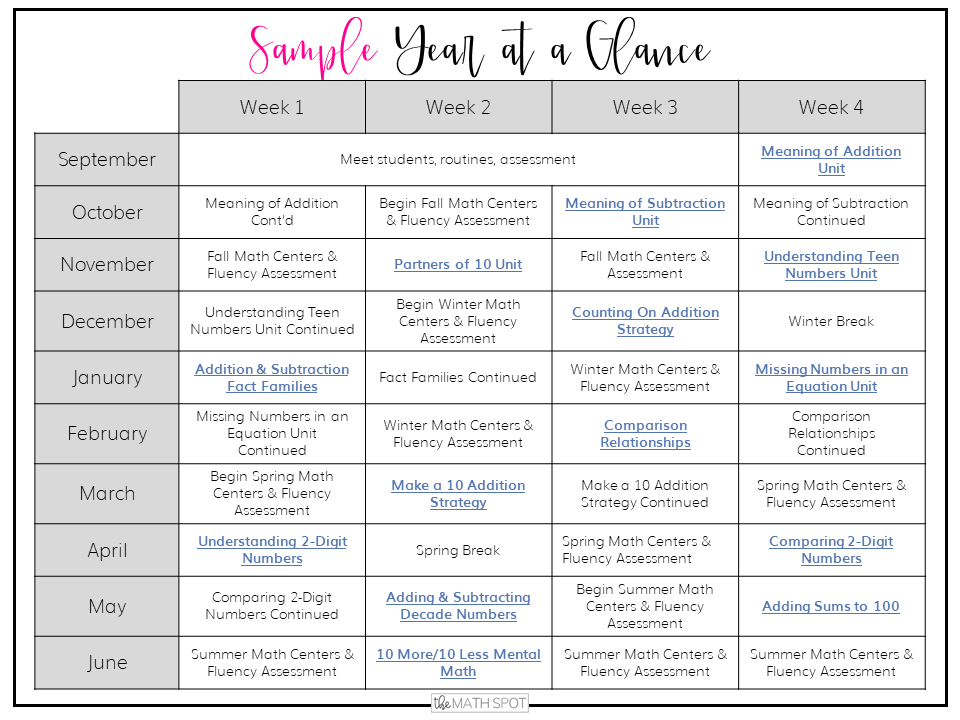The hardest part about trying something new is just getting started. Set yourself up for success in the year ahead by getting out in front of your math intervention plan.

When your students arrive and when needs start to become apparent, you will already have a plan in place so you can simply pick it up and begin!
Start With Tier 1
Look at your tier 1 pacing guide. List out the months of the year and the topics that will be taught in tier 1 during each month of the year.
Now reflect, on what topics are generally most difficult for your students.
- What are some of the reasons why those topics are so difficult?
- What prerequisite or foundational skills do your students need to have in place so that these topics aren’t so difficult in the future?
This list will become so important! Your goal in tier 3 is to backfill your students’ skills and understanding gaps. When you have a list of prerequisite and foundational skills and when those skills will be needed you are starting to create a map of deadlines for supporting your students in those skills so they can also be successful in tier 1!

Map Out Math Intervention
Look at the foundational needs you indicated for each tier 1 unit, this will become the basis of your math intervention planning.
For example:
You see that in December, tier 1 instruction focuses on the “Make a Ten” strategy for adding numbers together, you might note that you need to focus on partners of ten in November because it is a critical foundational skill.
Getting these foundational skills on your calendar now will help ensure your students succeed in tier 1 instruction!
Plan Your Math Intervention
You’ve identified the topic you want to teach so now it’s time to create an outline of how you will teach that skill and about how long you want to spend on that skill.
When I am planning a math intervention unit the first thing I think about is the CRA progression. The CRA math model refers to the three levels of support or modes of communicating math ideas to students. You begin with concrete (hands-on & tangible materials), move to representational (drawings & visual models) and finish with the abstract (numbers & equations).
When you introduce a new idea to your students, starting with the concrete allows your students to understand the idea more easily and completely than they would if you began with numbers and equations straight away.
Starting with the concrete also ensures that more of your students will be able to access and explore the concepts you are teaching.
Read more about how to use the CRA progression to plan intervention lessons and units.

Plan for Independence
It’s fantastic if your students are able to grow and show understanding in these foundational skills ahead of an upcoming unit. However, it is critical that your students have independence around these skills! You don’t want to find yourself in a situation where you are saying “They could do this in the small group with me but when they get into the whole group classroom setting they just aren’t independent yet!”. The more independent and fluent your students are in their foundational skills the more easily they will be able to understand new instruction and strategies.
Planning math centers and math games centered on foundational and prerequisite skills will ensure that your students are as prepared as possible for new instruction.
As they say, the best defense is a good offense- getting ahead of potential needs will help your new instruction to run as smoothly as possible.
Done-For-You Math Intervention
Looking for intervention units including pre and post assessment, lessons and independent practice that all follow the CRA model? I’ve got you covered! These units are SO easy to use, are engaging for your students and are effective in terms of helping your students to meet their goals.
FREE Intervention Planning Guide

This free math intervention planning guide will help you to prepare for the year ahead!
Sign up below to grab your free templates.

